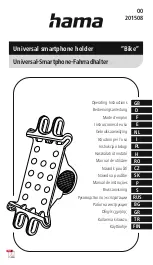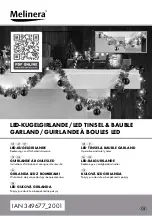
Unit Description
5-24
When PTC is activated, the pulsing of the LLS is fully monitored by the controller from complex algorithms, to deliver
improved temperature management and better fuel consumption.
To perform pulsing of the LLS in a zone, there must be at least one other zone where LLS is open (energised). This ensures
that there is always a path for refrigerant flow, to prevent low suction pressure.
Thus it was decided for the efficiency and simplicity of the system that:
• Only one remote LLS can be pulsed at a time,
• Remote zone is running in temperature control operation meaning that return air is maintained by +/- 1.1°C around set point,
• Unit is not operating in Single Zone Control (SZC) mode,
• Remote zone is not in defrost.
How to identify that the unit is running PTC
Looking to the expansion module LEDs, technicians will identify that a zone is running PTC when in COOL mode and close
to set point, the respective LLS (LLS2 or LLS3 as selected) will pulse ON and OFF during a 20 second period.
Based on the cooling effect of the previous 20 second period the algorithm will decide how long to pulse for the next 20 second
period, this could be half a second or up to the full 20 seconds, and this will continue until the zone reaches set point. Once at set
point and the return air rises to 1.1°C return air above set point, pulsing will resume in the same way.
If no other zone LLS is energised, then normal temperature control is in operation until another zone
LLS is open.
In most cases once zone one has reached set point it operates in a minimal heat mode, (like a running null mode, LLS1, HGS1
and SLS1 are all open), this allows zone one to maintain a stable temperature whilst allowing zone 2 PTC to remain active.
The result is improved temperature control, less times running in high speed and thus reduced fuel consumption.
Looking to the ServiceWatch download, technicians can identify that a zone is running PTC with the following information:
• A time log is set as soon as return air temperature is entering temperature control operation (±1.1°C around set point).
• OP Mode of the respective zone is indicating PTC as long as RA temperature remains in temperature control operation.
See below a sample of zone 2 running PTC with return air temperature remaining at +/- 0.5°C around
set point with unit running either high speed or low speed. This sample is also demonstrating the
immediate effect on discharge air temperature.
Содержание SLXi Spectrum
Страница 17: ...Safety Precautions 2 5 Warning Decals...
Страница 18: ...Safety Precautions 2 6 Warning Decals Information Decals...
Страница 74: ...Unit Description 5 30...
Страница 128: ...Controller Operation 7 28...
Страница 156: ...Electrical Maintenance 8 28...
Страница 177: ...Engine Maintenance 9 21 Integral Fuel Solenoid Components 1 Integral Fuel Solenoid 2 O ring 3 Fuel Injection Pump Groove...
Страница 234: ...Refrigeration Maintenance 10 22...
Страница 309: ...13 Mechanical Diagnosis TK 482 TK 486 and TK 486V Engines 13 2...
Страница 316: ...Mechanical Diagnosis 13 8...
Страница 322: ...Refrigeration System Diagnosis 14 6...
Страница 332: ...Single Temperature Refrigeration System Diagrams 15 10...
Страница 339: ...Multi Temperature Refrigeration System Diagrams 16 7...
Страница 340: ...Multi Temperature Refrigeration System Diagrams 16 8...
Страница 342: ...Wiring Diagrams and Wiring Schematics 17 2...
















































